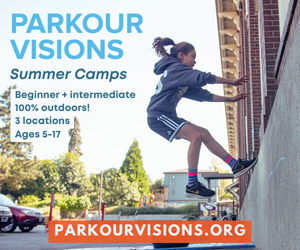They seem to come out of nowhere. Even if you can plan for or predict them, it doesn’t take away their intensity.
There’s the scream, the foot stomp, the aggressive “No,” and that face that makes you feel hot, stressed and like screaming, laughing — because it seems so ridiculous — and running all at once.
And it’s not like we come into these interactions at full mast. We are usually trying to do six other things or get from A to B — the table to their bed, the pool to the locker room, the park to the car, etc. — when we find ourselves in the eye of the torrential rain of the tantrum.
 It’s hard not to react — become defensive, put your much larger foot down over the top of their “no,” pick them up and move them (while they’re kicking you or their snot flings onto your clothes), or try to silence them for fear of judgment from onlookers. And it’s not uncommon to find ourselves trying to bribe our way through the tantrums, either.
It’s hard not to react — become defensive, put your much larger foot down over the top of their “no,” pick them up and move them (while they’re kicking you or their snot flings onto your clothes), or try to silence them for fear of judgment from onlookers. And it’s not uncommon to find ourselves trying to bribe our way through the tantrums, either.
Trust me. I get it. All of these responses make sense. And none of them actually work. They provide temporary and short-term relief. They get you from A to B, but they don’t focus on the root point of your little one’s tantrum, and that is that they have a feeling they are learning to express and don’t yet know how to do it in a way that makes you not want to cry, pull your hair out and scream, all at once.
So what can we do instead?
When you find yourself face to face with your toddler’s uvula as they show you the full range of their vocal cords, try the following steps:
Take 3 deep breaths. When you inhale, hold it for a second and slowly release it. This helps to activate your parasympathetic nervous system and moves you out of that stress response.
Remind yourself, “This is not about me.” They don’t like this feeling. They don’t wake up planning their day around tantrums or trying to make life harder for you — and them. They are just learning to deal with emotions that most adults don’t even know how to express effectively.
Focus on the “ask” underneath the tantrum. It’s not actually about the freezer pop. It’s not actually about not wanting to wash their hands. It’s not actually about the park. They are asking for you to help them through challenging feelings.
Separate emotion from behavior. You can validate a feeling while addressing a behavior. Try saying something like,
“That’s a big feeling. It sounds like you are feeling _____ because you are upset it’s time to get out of the pool/leave the park/_____. That makes sense. I would feel that way too if I wanted something I couldn’t do.”
Give them an alternate response. It’s not uncommon for us to use some version of “No” or “Stop” with our kids. We tell them what not to do but don’t explain WHY or what they can do instead.
“You are hitting/screaming/throwing toys/_____ right now because you feel frustrated, and you want me to know. You absolutely get to feel frustrated. And, screaming/hitting/throwing/_____ is not an effective way to communicate that because _____. When I am feeling _____, I _____. Let’s try that.”
Or
“You absolutely get to feel _____ about leaving the park/not wanting to go to bed/_____. Hitting/Screaming/_____ is not an okay way to respond to that because ___(insert why; ex. you could hurt yourself or someone else)_____. You can try _____ instead* and when you are ready to talk, I’m here.”
Know the limits of negotiation. Have you ever gotten to a place of anger or frustration where the last thing you needed was someone to tell you to calm down or try and silence you? When someone did that, how did you want to respond? Exactly. So we need to be mindful about doing this with our little ones. The only way to move past an emotion is to feel it fully. Sometimes you can craft the most gentle and supporting response and still get screams and thrown toys. That doesn’t make you a bad parent or them an unruly kid. It just means they are having a hard time regulating right now.
Know that they may need a second before they can be by or talk to you. We have worked with my 2-and-a-half-year-old to say, “I need a minute” or “I need a break” when she feels like she needs some space and have helped her know what that can look like while keeping her safe.
Note, if it is a safety concern, you may have to intervene (ex., if they are running towards the street and you need to pick them up or if they are throwing toys and you need to grab them away from them.)
Make sure to return to the behavior after they come down from their feelings. Once they have moved through the extreme of their emotions, come back to the situation. Make space to validate their emotion. You can even ask questions about what this feels like in their body when they feel it. Honor their feelings and hold boundaries on how they can move through those feelings in the future in less destructive or activating ways.
Move forward. Once you have moved through the tantrum and had a conversation with them about emotions and behaviors, you have to let it go. Kids don’t stay in the past and once it is over, it can be hard to just let go and be excited to play again or go forward like the last five minutes didn’t happen. And, that is incredibly important for them to see that they can feel their feelings, you talk about them and support them through it — and if there are any consequences or follow-ups in this, you talk about it — and then you move forward.
Take one last breath and remind yourself you are amazing. When it’s all done, your body may be vibrating with stress. You might be digging a shame hole, telling yourself you are a bad parent for how you handled the situation or for the fact you don’t like your kid in the moment. You aren’t a bad parent. And you aren’t supposed to like your kids every second of the day. Unconditional love is about showing up and putting in the work even when we don’t like them, and knowing that you are even reading this article is proof positive of how loving a caregiver you are.
* Try creating a feelings basket or corner to give your little one tools and space to go when they are feeling upset. You can even pack one in your diaper bag or car that has different sensory soothing activities like bubbles, a stress ball, and more.

















